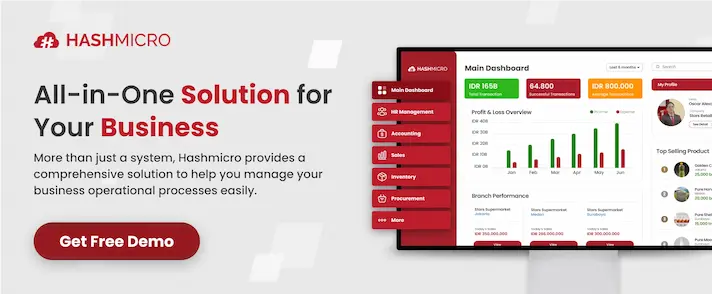Imagine if every customer came to your store, made a one-time purchase, and never returned. Over time, your marketing expenses would rise, while your revenue might struggle to grow consistently. This situation not only reduces profitability but also weakens your long-term business stability.
In Singapore’s competitive retail environment, companies with higher repeat purchase rates are known to perform better financially. Businesses that focus on customer retention can reduce acquisition costs and experience stronger cash flow. Local benchmarks show that well-managed companies often achieve repeat purchase rates above 25 percent.
To address this issue, business owners are turning to data-driven strategies and tools such as POS software. These solutions not only track customer behavior but also support engagement tactics that keep buyers coming back. In this article, you’ll learn how to calculate repeat purchase rate, why it matters, and how to increase it effectively.
Key Takeaways
|
What is Repeat Purchase Rate (RPR)?
Repeat Purchase Rate (RPR) is a metric that shows how many customers make a second or more purchase within a specific timeframe. This percentage reveals your customer base’s likelihood to buy again. A high RPR often signals strong buyer interest and product satisfaction.
RPR and retention rate may seem similar, but they serve different purposes. RPR focuses on the number of repeat buyers, while retention measures how long customers stay with your brand. One captures behavior, the other shows relationship longevity.
In business, RPR serves as a KPI that reflects customer satisfaction, brand trust, and product value. A high RPR indicates that customers find consistent value and become loyal buyers.
How to Calculate Repeat Purchase Rate

Calculating Repeat Purchase Rate (RPR) is not complicated, but it requires neat and reliable customer data. This figure shows the percentage of customers who make more than one purchase within a certain period.
Repeat Purchase Rate Formula
In general, the formula used is:

This formula is used to determine the proportion of customers who return to make transactions, compared to the entire customer base at a given time of analysis.
Steps to Calculate Repeat Purchase Rate
- Determine the Time Period: The first step is to select a specific time range, such as monthly, quarterly, or annually, based on the purchasing patterns in your business.
- Calculate the Total Number of Unique Customers: Identify how many different customers made purchases during that period. This data should not count the same customer more than once.
- Identify Customers Who Made Repeat Purchases: Count how many of those unique customers made purchases more than once during the same period.
- Apply the Formula: Divide the number of customers who made repeat purchases by the total number of unique customers, then multiply by 100 to obtain the value as a percentage.
Example Calculation
For example, in May, a wholesale store recorded 800 unique customers. Of that number, 120 customers made a second or subsequent purchase. Therefore:
Repeat Purchase Rate = (120 ÷ 800) × 100 = 15%
This figure indicates that 15% of all customers in that month were repeat customers.
Points to Consider
- Data Accuracy: Ensure that all transactions are properly recorded, including consistent use of customer identification, to ensure valid calculation results.
- Segmentation: You can group calculations by product category or customer type to identify which segments have the highest loyalty.
- Regular Comparisons: Use consistent time frames when comparing periods to accurately analyze repeat purchase trends.
Importance of Repeat Purchase Rate
Understanding Repeat Purchase Rate (RPR) is important for business people who want to build long-term relationships with customers. RPR is not just a number, but a comprehensive picture of customer loyalty and relationship strength. This metric plays a major role in driving business growth and stability.
1. Indicator of customer loyalty and satisfaction
A high RPR reflects strong customer loyalty to your products or services. It indicates that customers are satisfied and trust your brand. This satisfaction fosters mutually beneficial long-term relationships.
2. Revenue growth and stability
Existing customers typically contribute more to revenue without requiring high promotional costs. A stable RPR helps create a predictable revenue stream. This provides a strong financial foundation for business expansion.
3. Cost efficiency in marketing
Retaining existing customers is more cost-effective than acquiring new ones. Focusing on RPR helps optimize marketing budget allocation. This strategy improves operational efficiency and reduces acquisition costs.
4. Enhanced brand reputation and word-of-mouth marketing
Satisfied customers are more likely to recommend your business to others. This organic promotion enhances reputation and naturally attracts new customers. Customer loyalty forms the foundation of strong branding.
5. Valuable insights into customer preferences and behavior
Through repeat purchases, businesses can analyze customer preferences more accurately. This data helps in making informed decisions in product development. This deep understanding strengthens distribution and marketing strategies.
6. Competitive advantage
A high RPR demonstrates a strong relationship between the business and its customers. This sets it apart in a competitive market and helps maintain its market position. The business also becomes more resilient to external fluctuations.
7. Long-term business growth and sustainability
Improving RPR supports sustainable long-term growth strategies. Loyal customers drive higher lifetime value. Businesses are also better prepared to face future market challenges.
Factors Affecting Repeat Purchase Rate (RPR)
Repeat Purchase Rate is influenced by various factors related to customer experience, product value, and business approaches to loyalty. By recognizing these factors, businesses can develop more effective strategies to increase repeat purchases on an ongoing basis.
1. Product quality and value
Products with consistent quality are more likely to encourage customers to repurchase. Product value must also be commensurate with the price paid. Perceived value significantly influences long-term loyalty.
2. Customer service and experience
Quick and professional interactions can strengthen customer trust. Effective problem resolution fosters loyalty even in the face of challenges. Responsive service is a key differentiator in a competitive market.
3. Pricing and perceived value
Competitive pricing must reflect the quality and experience offered. Discounts or attractive promotions can encourage selective repeat purchases. However, this strategy must still maintain the perceived value of the product.
4. Brand experience and reputation
A positive reputation creates a sense of security in repeat purchasing decisions. Consistent and trustworthy brands are more likely to build long-term relationships. A strong brand image encourages customer advocacy.
5. Convenience and accessibility
An easy and fast purchasing process encourages customers to return without obstacles. Stock availability and smooth access both online and offline are very important. Operational efficiency has a direct impact on the shopping experience.
6. Customer engagement and communication
Personalized communication makes customers feel cared for. Data-driven marketing strategies strengthen the relationship between the brand and customers. Loyalty program software helps manage ongoing communication efficiently.
7. Loyalty programs and incentives
Loyalty programs that provide tangible benefits can increase purchase frequency. Exclusive offers for long-time customers create added value. The use of loyalty program software facilitates the tracking and management of incentives.
8. Customer feedback and responsiveness
Listening to customer feedback shows that the business values their opinions. Quick responses to feedback boost trust. Feedback-based innovations keep products and services relevant.
9. Personalization and customization
Personalized experiences make customers feel more connected. Product customization options increase satisfaction and repeat purchase interest. Proper segmentation supports customer retention strategies.
10. Technological advancements
Technology facilitates product recommendations, order tracking, and information delivery. These innovations improve convenience and accuracy in purchasing. Integrated systems speed up customer transaction processes.
11. Economic and market conditions
Economic conditions affect customer purchasing power and shopping patterns. Businesses need to be adaptive to market changes to remain relevant. Comparisons with competitor strategies also influence repurchase decisions.
What is a Good Repeat Purchase Rate?
There is no single percentage that defines a good repurchase rate. It varies depending on the industry, product type, and customer satisfaction level. Businesses need to find the right balance between retaining existing customers and acquiring new ones.
For most e-commerce businesses, a Repurchase Rate between 25 and 30 percent is considered healthy. If your business consistently achieves 20 to 30 percent repeat buyers each month, this generally reflects strong customer engagement and product satisfaction.
On the other hand, businesses with 50 percent or more returning customers may be able to capitalize on opportunities to expand their market through new customer acquisition strategies. If your RPR drops below 25 percent, this may indicate missed opportunities in customer retention and the need to re-engage first-time buyers more effectively.
Best Practices to Improve Repeat Purchase Rate
Optimizing Repeat Purchase Rate (RPR) requires a consistent strategic approach. Every customer interaction can be an opportunity to build loyalty. Here are some best practices that business owners can implement:
1. Invest in customer retention programs
Loyalty program software helps create a repeatable experience that customers value. These programs offer incentives such as points or exclusive offers for future purchases. These efforts encourage buyers to keep coming back without relying on price promotions.
2. Enhance customer experience
A smooth shopping experience increases the likelihood of repeat purchases. Ensure the checkout process is easy, deliveries are timely, and customer support is responsive. Consistent service builds long-term trust in the brand.
3. Offer personalization and exclusive offers
Personalization, such as product recommendations based on purchase history, enhances relevance. Customers are more likely to return if they feel understood and valued personally. Exclusive offers add value and increase engagement.
4. Strengthen post-purchase engagement
Post-purchase interactions like thank-you emails or satisfaction surveys strengthen relationships. This communication shows that your business cares about the customer experience. This approach also opens up opportunities for upsells or repeat orders.
Improve Repeat Purchase Rate with HashMicro POS Software
HashMicro POS Software is equipped with powerful tools to help businesses boost their repeat purchase rate through efficient transaction handling and customer engagement. By integrating real-time inventory tracking, personalized promotions, and billing automation, this system supports a seamless post-purchase experience that encourages return visits.
The software is designed to enhance the overall shopping journey, from checkout to post-sale engagement. With features that manage customer data, track buying behavior, and streamline sales processes, businesses can better understand their customers and deliver experiences that build loyalty.
With HashMicro POS, companies can increase customer satisfaction, reduce friction at the point of sale, and apply insights from past purchases to drive future sales. These capabilities directly support efforts to increase repeat transactions and foster lasting customer relationships.
Key Features Supporting Repeat Purchase Rate:
- Multi-payment Method: Offer convenience with support for cash, debit, credit, or e-wallet payments, allowing customers to transact effortlessly and return without barriers.
- Inventory Tracking:Ensure that best-selling items are always in stock through real-time updates and auto-reordering, reducing missed sales that impact repeat purchasing.
- Customer & Promotion Management: Maintain customer records and implement targeted promotions based on past purchases to motivate repeat buying behavior.
- Easy Billing & Reconciliation: Generate invoices instantly and reconcile payments automatically to simplify customer transactions and reduce back-office delays.
- Return, Refund, & Credit Management: Handle product returns and refunds smoothly, providing a reliable post-purchase process that builds trust and supports retention.
- Comprehensive Reporting: Access insights such as purchase patterns and top-performing products to guide loyalty program strategies and enhance retention campaigns.
Conclusions
The Repeat Purchase Rate (RPR) is an important indicator for measuring customer loyalty, revenue consistency, and the effectiveness of your marketing efforts. Monitoring RPR helps businesses understand whether customers are truly satisfied enough to return, which drives long-term success and profitability.
With HashMicro’s POS Software, companies can build a structured rewards system, automate customer interactions, and provide personalized incentives, all designed to stimulate repeat purchases and enhance the overall customer lifecycle experience.
Additionally, eligible businesses in Singapore can leverage up to 70% funding support through the CTC Grant, implementing enterprise-level retention tools more affordable and efficient.
Book a free demo today and discover how increasing your repeat purchase rate can lead to sustainable growth and stronger customer relationships.
Question About Repeat Purchase Rate
-
What is an example of a repeat purchase?
A repeat purchase occurs when a customer buys the same product or service more than once. For example, a customer who returns monthly to reorder office supplies from the same vendor is making repeat purchases.
-
What is the key repeat rate?
The key repeat rate is a performance indicator that shows the percentage of returning customers within a given period. For business owners, this rate helps assess the effectiveness of customer retention strategies and predict future revenue stability.
-
What is a good purchase rate?
A good repeat purchase rate is one that supports sustainable revenue growth and minimizes reliance on new customer acquisition. Typically, 20 to 30 percent is a solid benchmark, especially for businesses with long-term customer value strategies in place.
-
What is a high repeat purchase rate?
A high repeat purchase rate signals strong customer loyalty and product-market fit. For most industries, a rate above 25 percent is considered healthy. It suggests that your offerings meet expectations and customers trust your brand enough to return.












